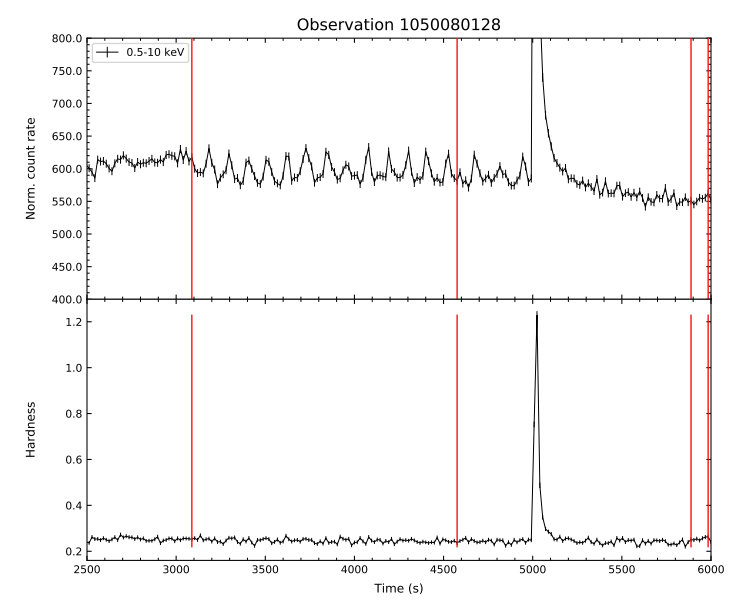NICER / ISS Science Nugget
for June 18, 2020
Short-duration milliHertz QPO seen in 4U 1636-53
Publicly available NICER data have been used to produce several science papers by investigators not on the NICER
Science Team. One that has just been accepted for publication in the Astrophysical Journal is by Lyu et al., on
the low-mass binary system 4U 1636-53.
4U 1636-53 contains a neutron star in orbit with a star comparable in mass
to our Sun. Lyu et al. describe measurements of a milliHertz quasiperiodic oscillation (QPO), with a period of
90-110 seconds (see figure). As observed in some other neutron-star X-ray binaries that exhibit mHz QPOs, the
periodicity comes and goes with time. It is likely that the detected mHz QPO is due to marginally stable nuclear
burning of helium on the neutron star surface. Such marginally stable burning usually precedes sudden, explosive
thermonuclear burning, resulting in a so-called Type I X-ray burst, which NICER also detected in this instance.

Figure:
X-ray intensity (top panel) of 4U1636-536 seen by NICER, and its spectral hardness (lower panel), as a function of
time. The vertical red lines represent gaps in the data. The interval from roughly 3000-4500 seconds clearly
shows the periodicity of the fleeting mHz QPO. Later in the observation, a Type 1 thermonuclear X-ray burst is
seen (around time=5000 seconds).
<< Previous
Main Index
Next >>